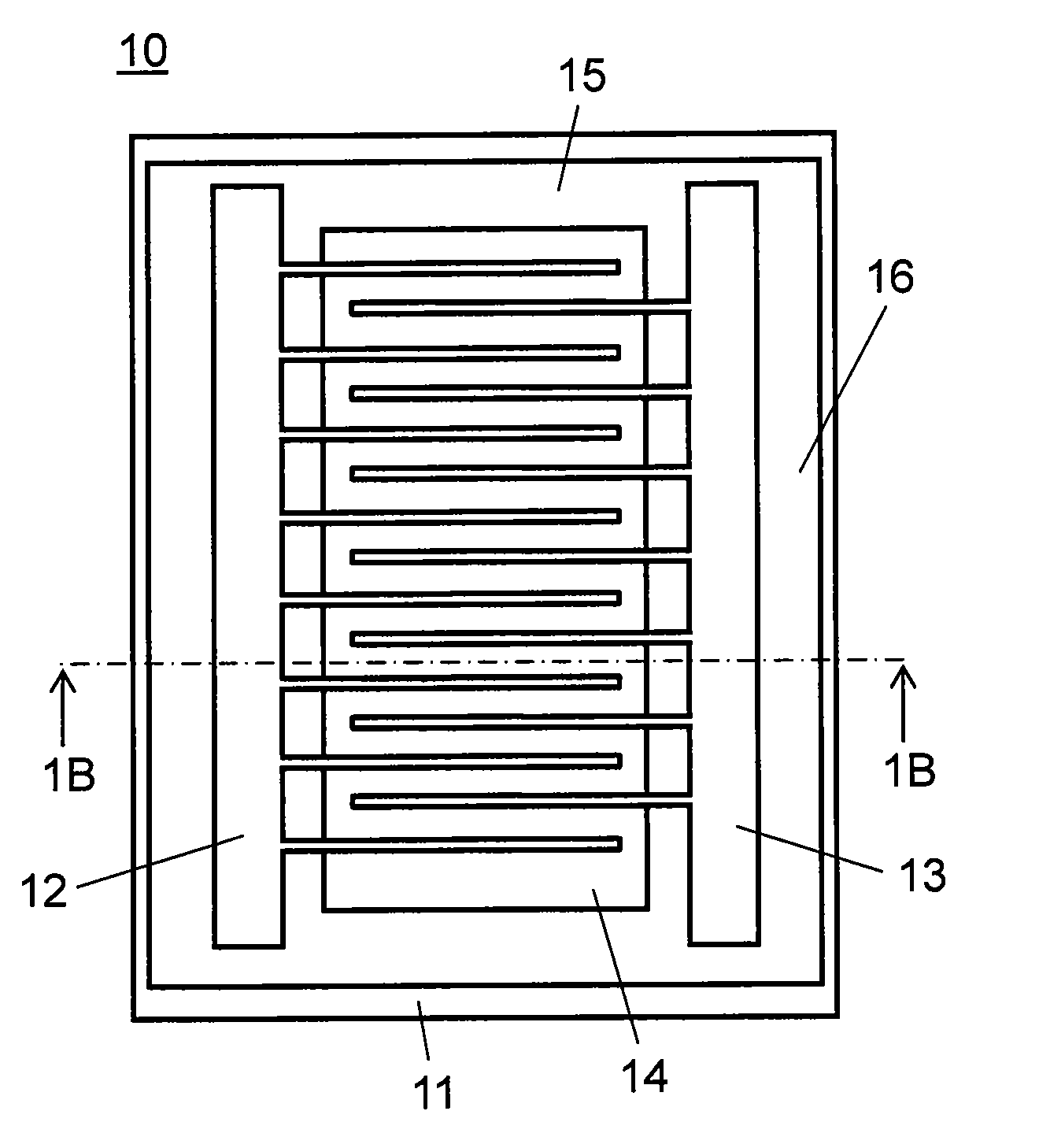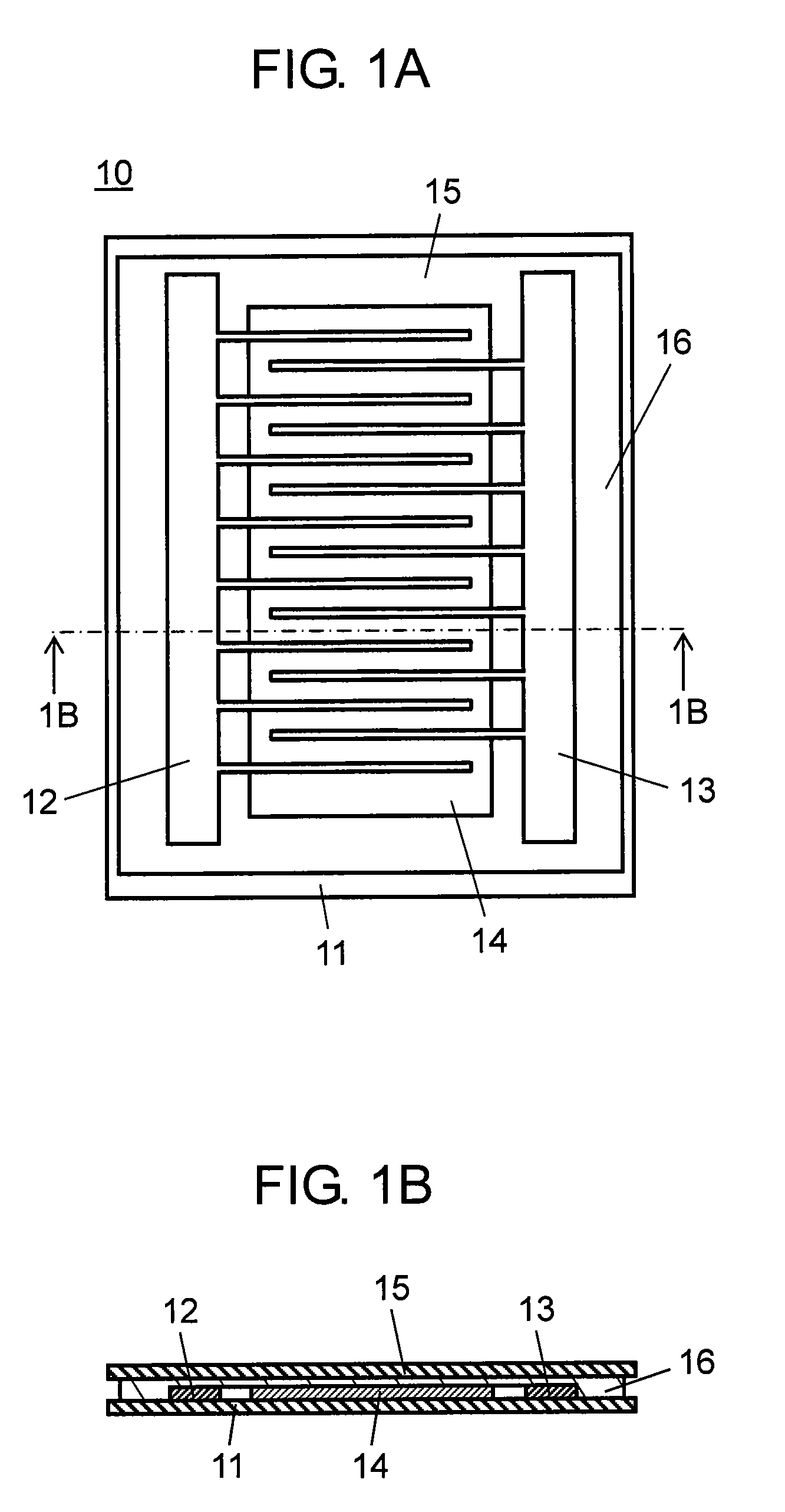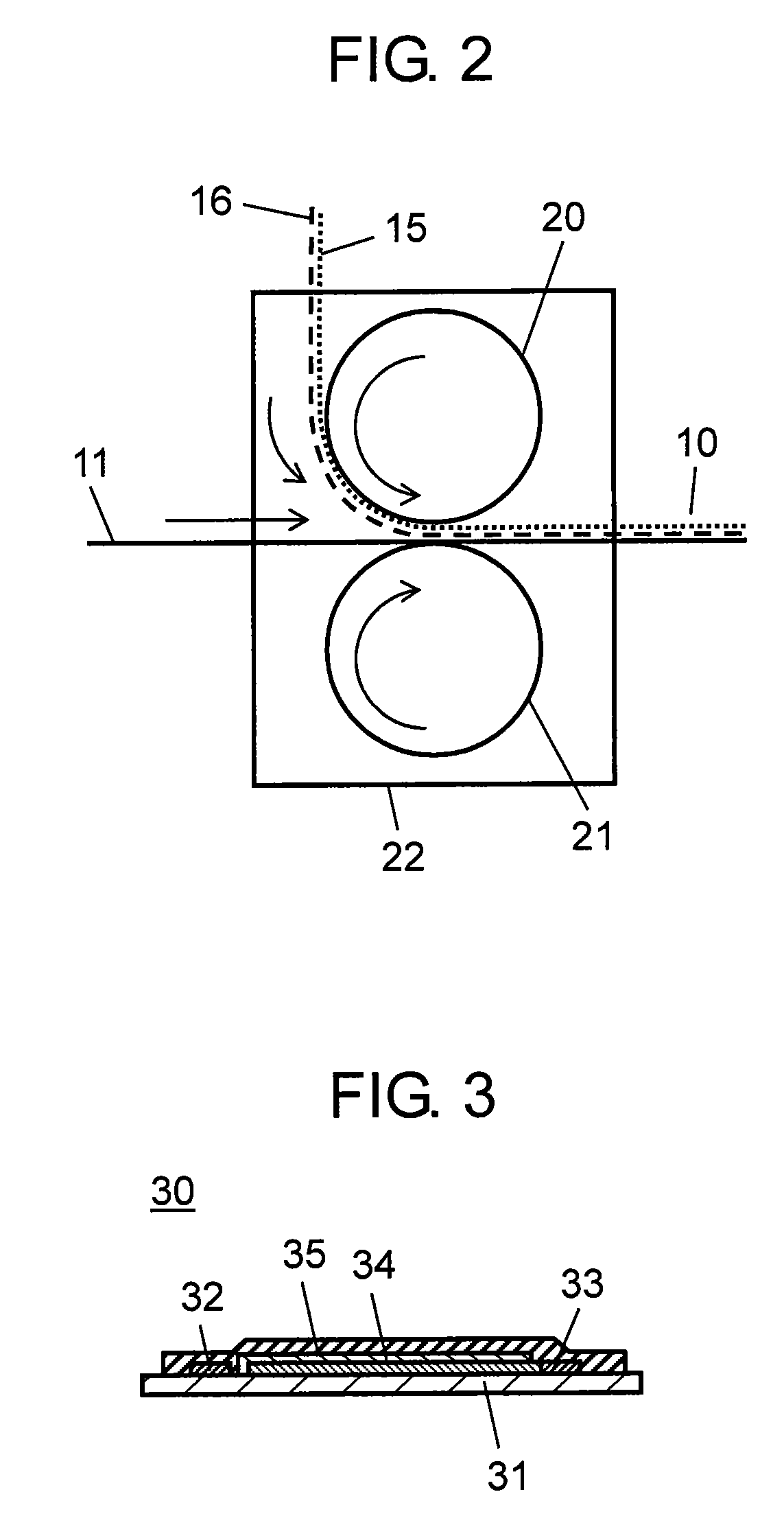Sheet heating element
a heating element and sheet technology, applied in the field of sheet heating elements, can solve the problems of uneven wrinkles on the heating element, compromise of passenger seating comfort, and ohmic resistance heating details, and achieve the effects of excellent flexibility, durability and reliability, and low manufacturing cos
- Summary
- Abstract
- Description
- Claims
- Application Information
AI Technical Summary
Benefits of technology
Problems solved by technology
Method used
Image
Examples
embodiment 1
of a Sheet Heating Element
[0084]Following is a description of an embodiment of a sheet heating element using the above-described polymer resistor. FIG. 4A is a plan view of Embodiment 1 of the sheet heat element of the present invention, and FIG. 4B is a sectional view of the sheet heating element of FIG. 4A along the line 4B-4B.
[0085]A sheet heating element 40 includes an insulating substrate 41, a first line electrode 42A, a second line electrode 42B, and a polymer resistor 44. The line electrodes 42A, 42B are sometimes referred together as line electrodes 42. The line electrodes 42 are sewn onto the insulating substrate 41 with a thread 43. The polymer resistor 44 is thermally adhered on top of this in the form of a film.
[0086]The sheet heating element 40 is produced in the following manner. First, the line electrodes 42A, 42B are disposed right-left symmetrically on the insulating substrate 41. Next, the line electrodes 42A, 42B are partially sewn onto the insulating substrate 4...
embodiment 2
of a Sheet Heating Element
[0141]FIG. 7A is a plan view of the sheet heating element 70 of Embodiment 2 of the present invention, and FIG. 7B is a sectional view along the line 7B-7B in FIG. 7A. The structure differs from that of Embodiment 1 (see FIG. 4A) in that line electrodes 71 are arranged in wavy lines on the insulating substrate 41.
[0142]As shown in FIG. 7A, the line electrodes 71 are arranged in wavy lines on the insulating substrate 41, being attached by the thread 43. In accordance with this structure, when an external force is applied to the sheet heating element 70, since the line electrodes 71 are arranged in wavy lines, having leeway in terms of length, they readily change the shape in response to tension, stretching, and bending. Therefore, the wave line electrodes 71 have mechanical strength with respect to external force superior to that of the line electrodes 42 arranged in straight lines as shown in FIG. 4A.
[0143]Furthermore, in regions where the wave line electro...
embodiment 3
of a Sheet Heating Element
[0146]FIG. 8A is a plan view of a sheet heating element of Embodiment 3 of the present invention, and FIG. 8B is a sectional view along the line 8B-8B in FIG. 8A. The structure differs from that of Embodiment 1 (see FIG. 4A) in that auxiliary line electrodes 81 are arranged between the pair of line electrodes 42. In other words, auxiliary line electrodes 81 are arranged between the pair of line electrodes 42, and are sewn onto the insulating substrate 41 by sewing machine, using a thread 82 made of polyester fibers or the like, as in the case of the line electrodes 42.
[0147]In the structure shown in FIG. 4A, the polymer resistor 44 is prone to unevenly heats up between the line electrodes 42, and the resistivity for that portion rises, concentrating the electric potential there. If this state continues, the temperature of that part of the polymer resistor 44 increases more than other parts, resulting in what is known as the hot-line phenomenon. By providing...
PUM
 Login to View More
Login to View More Abstract
Description
Claims
Application Information
 Login to View More
Login to View More - R&D
- Intellectual Property
- Life Sciences
- Materials
- Tech Scout
- Unparalleled Data Quality
- Higher Quality Content
- 60% Fewer Hallucinations
Browse by: Latest US Patents, China's latest patents, Technical Efficacy Thesaurus, Application Domain, Technology Topic, Popular Technical Reports.
© 2025 PatSnap. All rights reserved.Legal|Privacy policy|Modern Slavery Act Transparency Statement|Sitemap|About US| Contact US: help@patsnap.com



